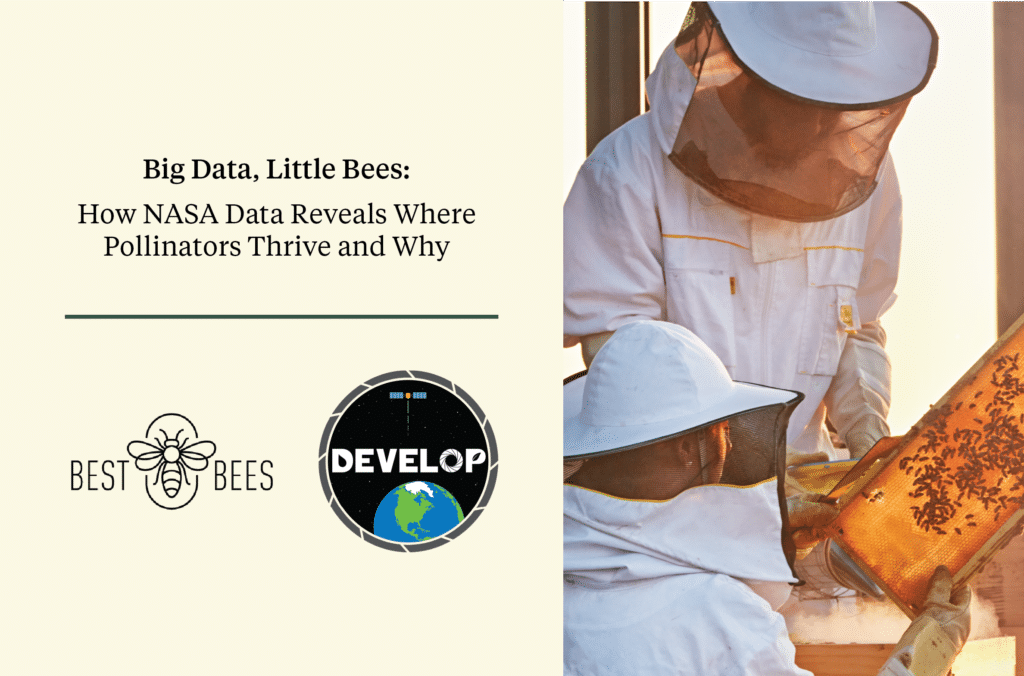Thank you for your interest in our “Big Data, Little Bees: How NASA data reveals where pollinators thrive and why” webinar!
Each backyard beehive and rooftop apiary is part of a vast network of tiny buzzing barometers. Together, they help scientists study the local and global environment. How? It’s all about the data. In this webinar, we zero in on the data we get from thousands of our clients’ beehives and zoom out to global maps of bee activity and climate conditions from NASA satellites.
We delve into the science of our beekeeping philosophy–the how and why we focus on bee health data and seek a wide-ranging view of the plight of pollinators.
Noah Wilson-Rich, Ph.D., Founding Partner and Chief Scientific Officer of The Best Bees Company, and Darcy Gray, Fellow with the NASA DEVELOP Program, bring these data together to show a fascinating picture of bees on Earth. Their work simplifies the complex puzzles facing pollinators. You’ll come away informed and inspired to have beehives that support scientific inquiry.
Please fill out the form below to watch the webinar.





